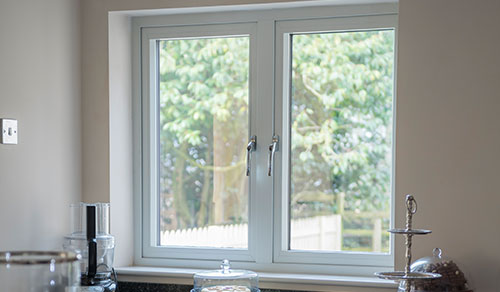Double glazing is a popular method of insulating windows by using two panes of glass instead of one. This technique has gained significant traction in both residential and commercial buildings due to its numerous benefits, including energy efficiency, noise reduction, and enhanced security. This report aims to provide a detailed overview of double glazing, exploring its benefits, types, installation processes, and considerations for homeowners and builders.
1. Introduction to Double Glazing
Double glazing refers to the use of two sheets of glass separated by a space filled with air or gas, which acts as an insulator. This design significantly reduces heat transfer between the interior and exterior of a building, thereby improving energy efficiency. The gap between the panes is usually filled with argon or krypton gas to enhance insulation further. Double glazing can be applied to various types of windows, including casement, sliding, and tilt-and-turn windows.
2. Benefits of Double Glazing
2.1 Energy Efficiency
One of the most significant advantages of double glazing is its ability to improve energy efficiency. By reducing heat loss during winter and keeping interiors cooler during summer, double-glazed windows can lower heating and cooling costs. Studies have shown that double glazing can reduce energy bills by up to 20-30%, making it a worthwhile investment for homeowners.
2.2 Noise Reduction
Double glazing also provides excellent sound insulation. The two layers of glass, combined with the air or gas-filled gap, help to dampen external noise. This is particularly beneficial for homes located near busy roads, airports, or industrial areas, allowing residents to enjoy a quieter living environment.
2.3 Increased Security
The construction of double-glazed windows makes them more difficult to break than single-pane windows. The two layers of glass create a barrier that is harder to penetrate, thus enhancing the security of a home. Additionally, many double-glazed windows come with advanced locking mechanisms that further deter potential intruders.
2.4 UV Protection
Double glazing can also protect interiors from harmful ultraviolet (UV) rays. The glass used in double glazing can be treated to filter out a significant portion of UV radiation, helping to prevent fading of furniture, carpets, and artwork.
3. Types of Double Glazing
Double glazing comes in various forms, each designed to meet specific needs and preferences:
3.1 Standard Double Glazing
This is the most common form of double glazing, consisting of two panes of glass with a sealed air gap. It provides good insulation and is suitable for most residential applications.
3.2 Low-E Double Glazing
Low emissivity (Low-E) double glazing features a special coating on one of the glass panes that reflects heat back into the room while allowing sunlight to enter. This type is particularly effective for energy efficiency, as it helps maintain a comfortable indoor temperature year-round.
3.3 Triple Glazing
While technically not double glazing, triple glazing involves three panes of glass and two air gaps. It offers even greater insulation and is often used in extremely cold climates where maximum energy efficiency is required.
3.4 Acoustic Double Glazing
Designed specifically for sound insulation, acoustic double glazing uses thicker glass or different thicknesses of glass in the panes to further reduce noise transmission. This is ideal for homes in noisy urban environments.
4. Installation Process
The installation of double glazing is a critical step that requires professional expertise to ensure optimal performance. The following outlines the typical installation process:
4.1 Assessment
Before installation, a thorough assessment of the property is conducted. This includes measuring existing windows, evaluating the building's energy efficiency, and determining the best type of double glazing for the specific needs.
4.2 Removal of Old Windows
If replacing existing windows, the old windows are carefully removed. This step must be done with caution to avoid damaging the surrounding structure.
4.3 Installation of New Frames
New frames are installed to accommodate the double-glazed units. It is crucial that these frames are properly aligned and sealed to prevent air and water leaks.
4.4 Fitting Double-Glazed Units
The double-glazed units are fitted into the frames, ensuring a snug fit. Proper sealing is essential to maintain the integrity of the insulation.
4.5 Final Adjustments and Sealing
After fitting the units, final adjustments are made, and seals are applied to prevent moisture ingress. This step is vital for the longevity and performance of the double glazing.
4.6 Cleaning and Maintenance
Once installed, the windows are cleaned, and the homeowners are provided with guidance on maintenance to ensure the longevity of the double glazing.
5. Considerations for Homeowners
When considering double glazing, there are several factors homeowners should take into account:
5.1 Cost
While double glazing can lead to significant energy savings, the initial investment can be substantial. Homeowners should weigh the long-term savings against the upfront costs and consider available financing options.
5.2 Aesthetic Impact
Double glazing can alter the appearance of a building. Homeowners should consider how new windows will fit with the architectural style of their home and potentially consult with a designer.
5.3 Local Climate
The local climate can influence the effectiveness of double glazing. In warmer climates, Low-E glass may be more beneficial, while in colder regions, triple glazing may be warranted.
5.4 Professional Installation
It is essential to hire qualified professionals for installation to ensure that the double glazing performs as intended. Poor installation can lead to issues such as leaks, condensation, and reduced energy efficiency.
6. Conclusion
Double glazing presents a multitude of benefits, including enhanced energy efficiency, noise reduction, increased security, and UV protection. With various types available and a straightforward installation process, it is an attractive option for homeowners looking to improve their living spaces. By carefully considering the benefits, types, and installation methods, homeowners can make informed decisions that lead to long-term satisfaction and energy savings.



